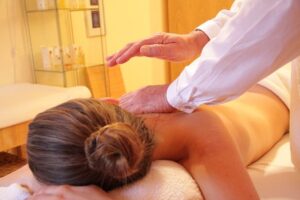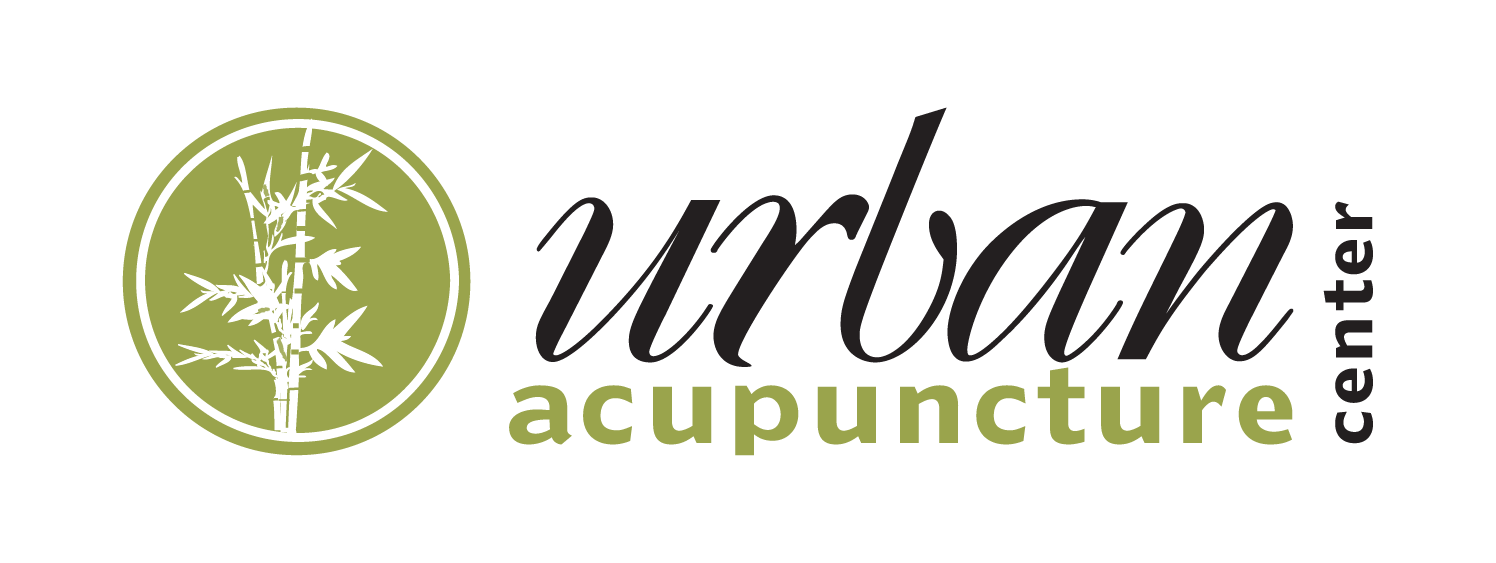by urban-acupuncture | Dec 5, 2019 | Massage Therapy
Myofascial Release Massage
 Myofascial Release, sometimes referred to as MFR for short, is massage technique that involves applying firm, steady pressure to areas of damaged fascia in order to break up adhesions and soften scar tissue. The goal of Myofascial Release Massage is to target areas of pain, discomfort, and soreness by reestablishing proper blood flow and nerve firing that have been blocked by damaged fascia. Although MFR is a type of massage, Swedish massage and other traditional massage techniques utilize repeating patterns of light pressure and “kneading” targeted at large muscle groups, while MFR involves focused pressure at the fascia by a thumb, hand, or elbow.
Myofascial Release, sometimes referred to as MFR for short, is massage technique that involves applying firm, steady pressure to areas of damaged fascia in order to break up adhesions and soften scar tissue. The goal of Myofascial Release Massage is to target areas of pain, discomfort, and soreness by reestablishing proper blood flow and nerve firing that have been blocked by damaged fascia. Although MFR is a type of massage, Swedish massage and other traditional massage techniques utilize repeating patterns of light pressure and “kneading” targeted at large muscle groups, while MFR involves focused pressure at the fascia by a thumb, hand, or elbow.
What is “Fascia”?
In order to understand what Myofascial Release Massage is, as well as the benefits of this technique, it’s important to have a basic understanding of what MFR is targeting: the fascia. The fascia is a complex, three-dimensional matrix woven throughout the body. It surrounds nearly every part of the human body, including our organs, muscles, nerves, and blood vessels, holding them in place and connecting them together. It is extremely strong, yet flexible and fluid, and highly adaptable.
When we are injured, our tissues are damaged, or our body experiences stress such as dehydration or inflammation, the body attempts to support and protect the surrounding tissues by contracting the nearby muscles. This extended contraction causes a build-up of toxins, restricts blood flow to the area, and causes the fascia to harden and tighten. And because the fascia is an interconnected web running throughout the body, tight and stiff fascia in one area of the body can cause ripples and bunching in the normally smooth, fluid fascia in other areas of the body.
Thus, the goal of Myofascial Release Massage is to identify areas where the fascia has become hard or blocked and, as the name implies, release that blockage. Once the fascia has been returned to its naturally fluid, flexible state, normal blood flow is restored, toxins are released, and the cycle of pain signals triggered by the original injury is interrupted. The ripples and bunches that the original block, or knot, created are smoothed out, reducing pain that the bunching created in other areas of the body.
What Does a Myofascial Release Massage Feel Like?
Myofascial Release Massage targets areas of blocked fascia through the use of gentle but sustained pressure. Once the massage therapist has located a “knot” or area of tight, stiff fascia, he or she will use his hand, thumb, or even elbow to apply gentle but sustained pressure on that knot until it is released. It may require applying pressure several times, moving to different sides of the knot until it has been totally released. In some cases, the pressure may be alternated with more traditional massage techniques targeting the nearby muscle groups to relieve muscle contractions as well.
Does it hurt? That’s a pretty common question! Myofascial Release Massage is a therapeutic technique focused on healing damaged tissues. It is not a massage technique designed to promote relaxation. The pressure required to unblock tight fascia should not be painful; however, it can be intense and sometimes uncomfortable, especially if the damage is extensive. Many patients do experience some level of muscular soreness for a day or two after a treatment; it’s very important to stay hydrated before and after the Massage to help combat this soreness.
For more information about how acupuncture, massage therapy and other treatments can help you, please contact the Urban Acupuncture Center Board Certified Licensed Acupuncturist’s team at Indianola Ave, Clintonville (614) 725-2488 | Main St, Westerville (614) 426-4406 or click here. Taking new patients in and around greater Columbus, Ohio.
by urban-acupuncture | Dec 1, 2019 | Acupuncture Columbus
Increase IVF and IUI Success with Acupuncture
Coping with infertility can be both physically and emotionally challenging. For some couples, modern medicine in the form of Assisted Reproductive Technology (ART) can offer the chance of a successful pregnancy. And at the same time, ancient medicine can work in conjunction with modern techniques to improve the chances that ART results in a successful pregnancy. If you have been struggling with infertility and are utilizing ART or are thinking about utilizing ART, we encourage you to talk to your fertility doctor about whether the ancient art of acupuncture can help promote your chances of getting pregnant.*
The two most common types of Assisted Reproductive Technology are:
- Intrauterine insemination (IUI): Also called donor insemination, alternative insemination, or artificial insemination, IUI involves placing sperm cells directly into the uterus at the time of ovulation. This procedure increases the chance of a successful pregnancy by stimulating and regulating ovulation and minimizing the time and distance the sperm has to travel in order to facilitate fertilization.
- In vitro fertilization (IVF): IVF utilizes a combination of medication and surgical procedures to help promote fertilization and successful implantation in the uterus. IVF involves removing eggs from the ovaries and mixing them with sperm cells in a lab to promote fertilization. One or more fertilized eggs are then placed inside the uterus; if the eggs successfully implant into the lining of the uterus, pregnancy occurs. IVF is more invasive than IUI and usually requires several months to complete one round.
Benefits of Acupuncture During IUI/IVF Cycles
The goal of incorporating acupuncture into either IUI or IVF cycles is to more effectively prepare the body for pregnancy by increasing blood flow to the reproductive organs, specifically the ovaries and uterus. Improved blood flow can help ensure that these organs are functioning optimally to promote ovulation and successful implantation of a fertilized egg. Specifically, by increasing blood flow to the reproductive organs, acupuncture can improve oxygenation, which is always critical for healthy cells and organs, as well as improve delivery of higher-quality nutrition, anti-oxidants, and necessary hormones. Moreover, improved blood flow can help thicken the uterine lining, which is especially critical for successful implantation.
Acupuncture has been shown to improve blood flow to the reproductive organs over the short term. Thus, it may be appropriate to begin acupuncture treatments at the beginning of an IUI or IVF cycle and still experience the potential benefits. However, acupuncture may provide some additional benefits if begun well in advance of ART treatments. For instance, acupuncture has been shown to help normalize imbalances in the body by promoting better sleep, improving digestive function, reducing areas of inflammation, and improving circulation in general. In other words, preparing your body in advance for a successful pregnancy by improving overall health and wellbeing, reducing stress, improving circulation, and correcting any natural imbalances can help promote the success of ART treatments.*
If you are coping with infertility and considering ART treatments, we encourage you to speak with your fertility doctor about whether acupuncture treatments before or during IUI and/or IVF cycles may be appropriate for you. While no one can guarantee the success of any specific type of fertility treatment, the addition of acupuncture into your ART cycles may improve the chances of a successful pregnancy.
*Disclaimer: Specific results are not guaranteed. Results may vary from person to person.
For more information about how acupuncture and other treatments can help you, please contact the Urban Acupuncture Center Board Certified Licensed Acupuncturist’s team at Indianola Ave, Clintonville (614) 725-2488 | Main St, Westerville (614) 426-4406 or click here. Taking new patients in and around greater Columbus, Ohio.
 Myofascial Release, sometimes referred to as MFR for short, is massage technique that involves applying firm, steady pressure to areas of damaged fascia in order to break up adhesions and soften scar tissue. The goal of Myofascial Release Massage is to target areas of pain, discomfort, and soreness by reestablishing proper blood flow and nerve firing that have been blocked by damaged fascia. Although MFR is a type of massage, Swedish massage and other traditional massage techniques utilize repeating patterns of light pressure and “kneading” targeted at large muscle groups, while MFR involves focused pressure at the fascia by a thumb, hand, or elbow.
Myofascial Release, sometimes referred to as MFR for short, is massage technique that involves applying firm, steady pressure to areas of damaged fascia in order to break up adhesions and soften scar tissue. The goal of Myofascial Release Massage is to target areas of pain, discomfort, and soreness by reestablishing proper blood flow and nerve firing that have been blocked by damaged fascia. Although MFR is a type of massage, Swedish massage and other traditional massage techniques utilize repeating patterns of light pressure and “kneading” targeted at large muscle groups, while MFR involves focused pressure at the fascia by a thumb, hand, or elbow. 